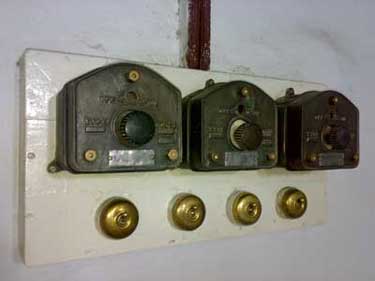
You flick the light switch and nothing happens. The coffeemaker, which was set on a timer to go off at 6 A.M., sits with pot of cold water on your kitchen counter. Before assuming that the devices are shot, follow this checklist:
- Confirm that the circuit has power and that the fuse hasn’t burned out or the circuit breaker tripped.
- Check to see if the appliance or fixture is working by checking light bulbs, cords, and plugs.
- Inspect the connections at the fixture and at the terminal screws to ensure they are tight.
- ❏ Check for a problem in the circuit itself.
The very first thing you should do is confirm that power is getting to the device. Every electrician has a story about going on a service call to repair a dead circuit only to discover that the breaker had tripped and no one checked. That’s a pretty expensive discovery for a homeowner. Your first step is to examine your fuse box or service panel. Does everything look okay? Are there burned-out fuses or tripped breakers for that circuit? Check carefully. Some breakers have very little sponginess and don’t move much when they trip. You might have to test several breakers if you haven’t done a circuit map and are uncertain which breaker controls the failed device. If you can eliminate the power source as the problem, check the connections (see the following figure) by taking the following steps:
- Turn the power off.
- Remove the cover plate from the device, and unscrew the device from the box.
- See if the terminal screws are tight and have good contact with the wires.
- If the device is back wired, there shouldn’t be any bare wire showing, only insulation.
- Check the wire nuts or taped-and-soldered connections to be sure they’re tight.
If there are no problems with the connections, you’ll have to probe further with your handy voltage tester and a continuity tester.


No comments:
Post a Comment